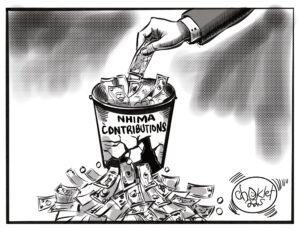International Trade Researcher and Consultant Trevor Simumba says his latest research findings have found proof that government unjustifiably escalated the cost of the Ndola-Lusaka dual carriageway from US$100 million to US$1.2 billion.
Speaking in an interview with News Diggers after the launch of the case study on Chinese debt held at Grand Palace Hotel in Lusaka, Friday, Simumba also said that further research revealed that there was no feasibility study conducted on the said project.
“I did my research on the Ndola Lusaka dual carriage way. That road was advertised officially in 2015 by the Road Development Agency (RDA) and it wasn’t the only one, there were about six other roads that were earmarked for public private partnership. And RDA issued RFPs (Actual Requests For Proposals). China Jiaxi was nowhere near that tender. The company that won, that was evaluated and came out top was a South African company. A well know company [but] I won’t mention them because I don’t want to embarrass them but they were chosen. RDA’s document [show that], you know when you issue an RFP particularly for roads, you give an estimate of the cost,” Simumba said.
He explained that instead of increasing the estimated cost of the project with 25 percent as stipulated in the construction guidelines, government increased the cost with over 100 percent.
“RDA’s own costing to do Lusaka-Ndola dual carriage way was K930 million which is almost US$100 million. So how did this project move from US$100 million to US$1.2 billion dollars? The economic return that was calculated by RDA is 29 percent, it is there in black and white, I have all the documentation. Currently what the government is saying is that the economic return is 15 percent to justify a lengthy concession. So the question is how are we doing these things because the minister claimed that there is a feasibility study. I went to the Ministry of Housing and Infrastructure there is no feasibility study, I went to RDA there is no feasibility study. RDA conducted what they call a pre-feasibility. So give or take, you can increase that $100 million to maybe $200 million because usually in construction, they have what they call a 25 percent variance. You can always go above by 25 percent but if you start going 100 percent, 200 percent that is too much. So the case study is there. Professor [Oliver] Saasa found that more than 20 percent of projects that had been allocated, they had cost overruns of over 100 percent,” Simumba said.
Simumba also expressed concern at the levels in which government ministries were acquiring debt on behalf of government which he said was against the law.
“Ministry of Housing will travel [and] right now, the minister is in China at an infrastructure conference and I can bet you, he is coming back with new loans. He goes to America, he negotiates 600 million dollars for housing and this is government. So the law, when you look at the Loans and Guarantees Act, the only person empowered to get loans on behalf of the Republic of Zambia is the Minister of Finance, not even the president of this republic is allowed to obtain any loans. And the minister can, if he wants to delegate, can only delegate the secretary to the treasury or to the permanent secretary ministry of finance. That is the law. And so there is a lot of quasi sovereign debt for example debt contracted by Zesco and Zesco is the biggest culprit at the moment when it comes to these quasi sovereign guarantees. I know for a fact that most state enterprises in Zambia right now are loss making, a lot of them have huge liabilities and most of these guarantees have been guaranteed by government,” Simumba observed.
Meanwhile Simumba echoed accessions by many stakeholders that government was not telling the truth on how much Chinese debt was has contracted.
“If you look at the yellow book of the 2018 budget, there is direct debt service going to many companies. It’s there in black and white. Avic international for 2018 is suppose to receive K153 million from the Zambian government as a debt service. Why are they in debt service to a company? All the loans and investments are based on the statistics we got from the government yellow book because the yellow book actually shows you the amount of the loan and the source heading number 21. So government thinks they can hide [but] you cannot hide information because they have to report to parliament, they have to budget for these things and then you are able to make an analysis and you are able to know that government is not giving us the whole truth,” said Simumba.
“And the fact is, on Chinese debt, government is not giving us the whole truth. I have proven it and I can prove it any time. How much have we actually borrowed? According to honourable [Margaret] Mwanakatwe, China is now Zambia’s natural first creditor accounting for 28 percent of external debt. In fact there were two debts that the government announced this year alone, for Lusaka (L400), roads phase two and for the Copperbelt roads, altogether about 400 and something million dollars. So when you add that, you are now getting to about 30 percent of external debt and it continues to rise. So why is it difficult to quantify Chinese loans to Zambia? Ministry of Finance may not even know about some borrowing because a lot of borrowing is being undertaken by ministries. All of us know that it is no suppose to be that way but why is it happening? why is parliament allowing this?”























